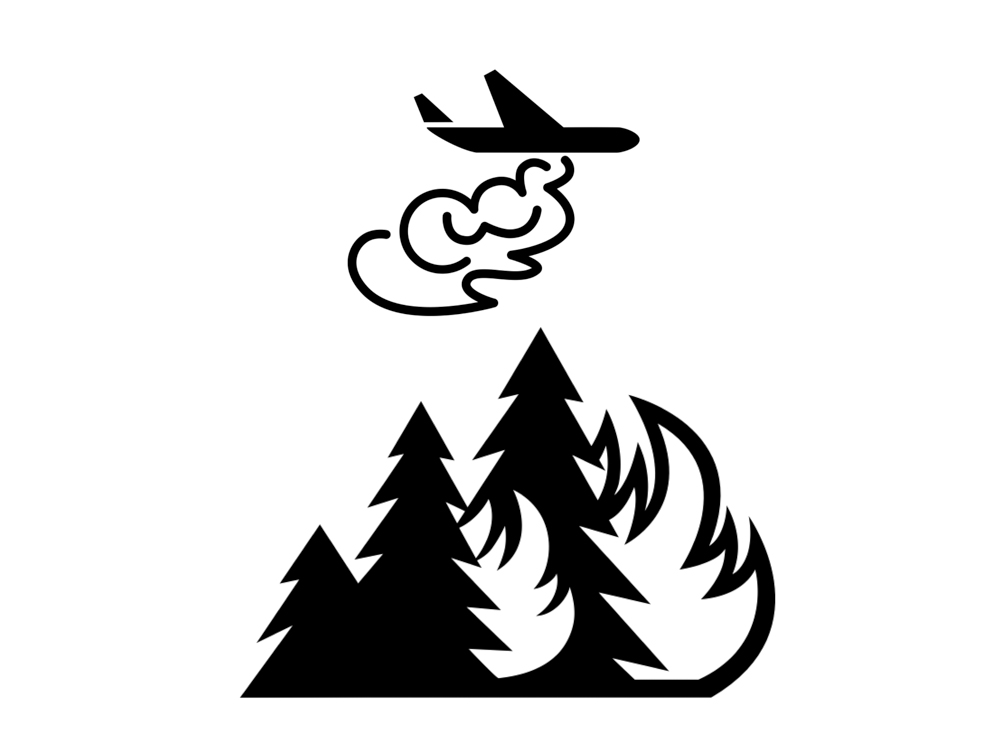Fire Protection and Environmental Protection Can Be Balanced

While I take exception to some points in Melinda Burns’s recent article on “fuel breaks”, she deserves credit for trying to unravel a complicated subject in which simplistic thinking and uninformed opinion are not particularly helpful. As a former chief counsel for the Environmental Defense Center, a longtime mountain resident, and before that, a U.S. Forest Service firefighter for 10 years, I believe that fire protection and environmental protection can be balanced in a way that works for everyone who loves our mountains and foothills, including those of us who actually live here.
No responsible person today denies that intelligent wildfire protection involves both vegetation management and “hardening” of homes to improve their survivability. Even groups like the Chaparral Institute and Los Padres ForestWatch acknowledge this on their websites, although not always in other public statements. Of course it is fair to ask how much vegetation needs to be removed, and what can be done to minimize habitat impacts from fuel-reduction projects. The Community Wildfire Protection Plan (CWPP) that the San Marcos Pass mountain and foothill communities have been working on for two and a half years addresses these issues, and also structure hardening, in great detail. The CWPP is a joint effort of County Fire and Forest Service vegetation management experts, experienced firefighters, mountain and foothill citizen representatives, environmental representatives, and a highly recognized consulting firm that has previously prepared CWPPs for Goleta, Montecito, and the Santa Monica Mountains.
Our CWPP does not propose any major new fuel breaks. What the CWPP recommends is maintaining, and in a few cases expanding, existing narrow bands of fuel reduction around our major communities, i.e., the San Marcos foothill tracts, Trout Club, and Painted Cave. The CWPP also identifies a few potential locations for tactical breaks that could help hold fires along area roadways. Lastly, the CWPP recommends clearing narrow strips along roadways to improve escape routes and access for firefighters. Having driven down a road surrounded by flames during my hotshot days, I can tell you it is not something I want my wife to experience when evacuating our pet rabbits from Painted Cave.
Regarding habitat protection, the CWPP contains 14 pages of recommendations for minimizing impacts and preserving habitat values in fuel treatment zones. Defensible space does not mean, as some opponents imagine, ground stripped of all vegetation. Well-designed defensible space preserves more valuable chaparral species such as manzanita and oaks and leaves islands of mixed vegetation to serve as browse and cover for wildlife species. Some recommendations in our CWPP will greatly improve fuel management practices, which have not always been environmentally sensitive in the past.
The CWPP also contains extensive information and recommendations on structure hardening. This is not exactly new information, nor is it rocket science. The hard part is financing structure improvements. Those of us who can afford things like re-siding our homes or new double-pane windows have mostly done it. This is not an option for the 70-year-old widow who lives down the street from me in Painted Cave. For her and other residents, saying they should harden their homes instead of clear brush amounts to “Let them eat cake.” Hardening homes is also not quite the panacea that groups like ForestWatch seem to imagine. Several homes that burned in the recent Holiday and Thomas fires were great examples of hardened homes but burned anyway. Multiply that by hundreds around the state. The problem is that it only takes one small ember getting in to start a house burning. If you are not home to batten the hatches when a fire starts, or an unlatched door swings open after a hasty evacuation, or if your contractor screwed up when installing new siding, you can lose your home.
There is only one thing that is truly effective in saving homes. That is having firefighters present to halt direct flames and ember fires before they do major damage. That is actually what the whole concept of defensible space is about. Firefighters need safe distances from intense heat and smoke to work safely and effectively. In the wildland setting, that means reducing surrounding natural fuels. Firefighters have died in multiple cases where they were more than 100 feet — the minimum defensible space for homes required by California law — from standing brush. Gambling with firefighters’ lives is not something our CWPP is going to do.
In the end, our County Board of Supervisors is going to approve a CWPP that protects public safety, even if it does not protect every square foot of chaparral. I think the board will find this an easy decision, however, because our CWPP actually does protect the mountain environment we love as much as realistically possible, while still adequately protecting homes and firefighter lives. This is something environmentalists should be supporting, not opposing.
Philip Seymour is a member of the Santa Barbara County Fire Safe Council.



